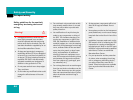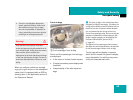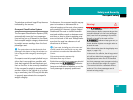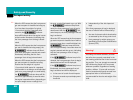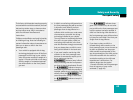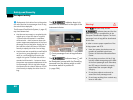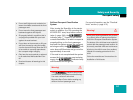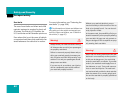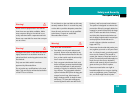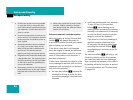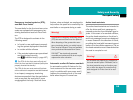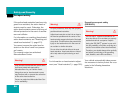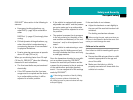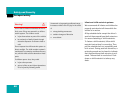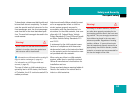
52
Safety and Security
Occupant safety
Seat belts
The use of seat belts and infant and child
restraint systems is required by law in all
50 states, the District of Columbia, the
U.S. territories and all Canadian provinces.
Even where this is not the case, all vehicle
occupants should have their seat belts fas-
tened whenever the vehicle is in motion.
For more information, see “Fastening the
seat belts” (
୴ page 368).
i
For information on infants and children trav-
eling with you in the vehicle and restraint sys-
tems for infants and children, see “Children in
the vehicle” (
୴ page 57).
Warning! G
Always fasten your seat belt before driving
off. Always make sure all of your passengers
are properly restrained.
Failure to wear and properly fasten and po-
sition your seat belt greatly increases your
risk of injuries and their likely severity in an
accident. You and your passengers should
always wear seat belts.
If you are ever in an accident, your injuries
can be considerably more severe without
your seat belt properly buckled.
Without your seat belt buckled, you are
much more likely to hit the interior of the ve-
hicle or be ejected from it. You can be seri-
ously injured or killed.
In the same crash, the possibility of injury or
death is lessened if you are properly wearing
your seat belt. Air bags can only protect as
they are designed if the occupants are prop-
erly wearing their seat belts.
Warning! G
Never ride in a moving vehicle with the seat
backrest in an excessively reclined position
as this can be dangerous. You could slide
under the seat belt in a collision. If you slide
under it, the seat belt would apply force at
the abdomen or neck. That could cause se-
rious or even fatal injuries. The seat back-
rest and seat belt provide the best restraint
when the wearer is in a nearly upright posi-
tion and the seat belt is properly positioned
on the body.



